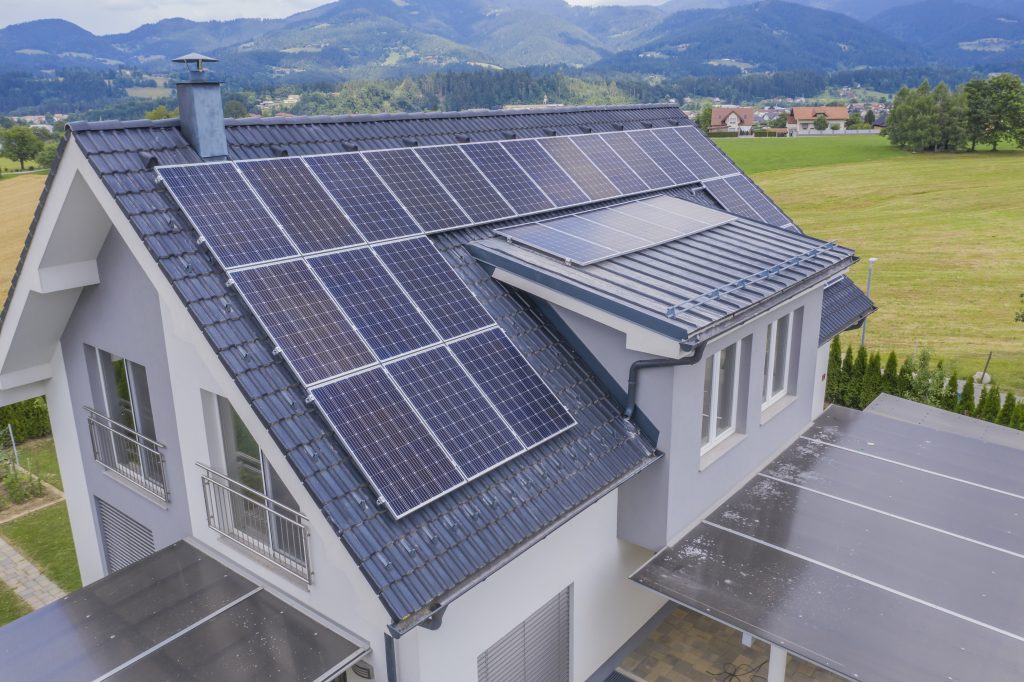
29 Dec Maximizing Solar Energy In Kenya: Tips for Optimal Panel Placement
Solar energy in Kenya has continued in its demand as a clean, renewable source of energy for homes and businesses. The effectiveness of any solar panel system depends, however, on how well it is placed. Proper placement can increase energy production, hence higher savings and faster payback of investment. This article discusses the key factors and gives some practical tips for optimum placement of the solar panels.
1. Solar panel orientation does matter.
In general, in the Northern Hemisphere, the most amount of energy has been created by facing south. East-facing panels capture more of the morning sun, and west-facing ones are better in the afternoon.
For most locations in the Northern Hemisphere, a south-facing orientation with a tilt angle equal to the latitude of the location is considered optimal. However, local factors such as climate and specific energy needs may influence the ideal orientation.
2. Avoiding Shade and Obstructions
Shade is one of the biggest enemies of solar panel efficiency. Even partial shading can dramatically reduce production from an entire array. Note the following:
– Conduct shade analysis of your property in every season
– Consider all trees, buildings, or other structures that might cast shadow
– The path of the sun changes through seasons and hence the shade patterns change.
3. Roof Considerations

The roof is usually the prime real estate for solar panels in a building. Key things to consider here are as follows:
Roof Angle: The angle of the roof should be around the optimal tilt angle for your latitude. If it isn’t, mounting systems can adjust the panel angle.
Roof Material: Slate or clay tiles are going to require additional mounting systems.
Roof Age and Condition: Your roof should be in good condition and not require immediate replacement after the installation of the panels.
Structural Integrity: Your roof needs to be checked structurally in order to support the extra weight of the solar panel system.
4. Ground Mounting Options

There are times when ground-mounted solar panels would work better:
• Allows for optimal orientation and tilt angle regardless of roof constraints
• Easier to clean and maintain
• Can be positioned to avoid shade more easily
• May allow for solar tracking systems for maximum efficiency
However, this method requires available land and probably has bigger installation costs.
5. Climate and Weather Considerations
Local climate can affect optimal panel placement:
• In areas with high snowfall, a steeper tilt angle helps snow slide off panels
• Running air under the panels in hot climates increases efficiency
• Steeper tilt in dusty areas allows panels to self-clean with rainfall
6. Legal and Aesthetic Considerations
Before finalizing panel placement, consider:
• Local laws and building laws
• Aesthetic impact on your property and neighborhood
7. Seasonal Adjustments
While fixed solar panel systems are most common, some installations allow for seasonal adjustments:
– Summer adjustment: Lowering the tilt angle during summer can capture more sunlight in these months of longer days.
– Winter adjustment: In winter, increasing the tilt angle helps panels catch more lower-angled sunlight.
– Equinox settings: Some opt to adjust it during the spring and fall equinoxes, finding a middle way between the summer and winter settings.
Manual tilting of panels seasonally could give an extra 4-5% more electricity generated per year, but this has to be balanced against the extra hassle involved and the increased risk of damage caused by frequent handling.
8. Micro-climate Considerations

Local micro-climates can have a serious effect on the performance of solar panels:
– Coastal: Salt spray on the panels means they may need to be cleaned more often.
– Urban heat islands: Elevated temperatures in towns and cities slightly reduce panel efficiency.
– High altitude locations: Thinner atmosphere results in more violent sunlight, making the panel output rather high.
– Foggy regions: Morning fog will impact early day production, thus favoring west-facing orientations.
Understanding your specific micro-climate will help fine-tune panel placement and maintain schedules.
9. Panel Spacing and Layout
To optimize solar panels, adequate spacing is required between them. This avoids inter-panel shading, especially for those placed in portrait orientation.
– Ensure sufficient airflow to prevent overheating, which may diminish efficiency.
– Take into account ease of maintenance access and cleaning when developing a layout.
– In big installations, consider the trade-off between the highest density of panels and avoiding self-shading.
10. Integration with Energy Storage
In laying out the panels, consider integration with energy storage systems during planning:
– Panels facing directly south generate more midday, which does not correspond with peak periods of usage.
• East-west divisions can provide a smoother production curve throughout the day and may lessen storage requirements.
• When battery storage is in operation, panel orientation can be engineered for overall system efficiency, not just raw production.
11. Future-Proofing Your Installation
When deciding on array orientation, keep in mind any future developments that could affect your system:
• Do oversize your mounting structure to accommodate system additions if you believe your energy load will increase in the near future.
• Be aware of any future development of surrounding properties that might create future shading.
– Be ready to integrate with developing technologies like EV charging or home automation.
14. Impact of Bifacial Panels
Bifacial solar panels have recently gained enormous popularity because they can absorb light from both sides. This means that, compared to the traditional ones:
These panels raise the energy yield by 5-30%.
Optimal placement of bifacial panels may differ from traditional ones.
• Reflectivity of the surface below the panels—for instance, white gravel on the ground for ground-mounted systems
• Bifacial panels may work better at a higher tilt angle to allow more light onto the backside.
Setting up a solar panel system at maximum efficiency is a complex task, highly rewarding. It will ask you to keep in mind a lot of different considerations that range from basic orientation and tilt to subtle nuances of microclimates and the latest developments with panels.
Although the general guidelines provided in the article serve as a strong starting point, every installation is different. All the specific characteristics of your property, the local climate, energy needs, and future plans play a very vital role in deciding the ideal placement of solar panels.
For most homeowners and businesses, the best assurance of optimal panel placement can be obtained by working with a reputable solar installation company. Spenomatic Solar are experts in this field. They not only have the necessary education and experience, but also the equipment to assess your situation properly in order to design a system which will satisfy your particular requirements while maximizing energy production.
With the rapid development of solar technology, we can still look forward to even more effective panels and more advanced mounting solutions in the future. Keeping up to date with these changes will let you make the most impeccable decisions concerning your present or future solar investment.


No Comments